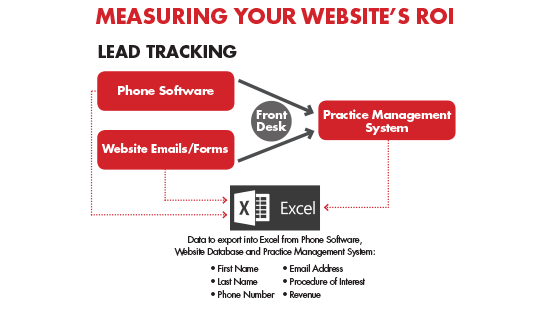Phone Tracking
In order to track your leads, you need to have a phone software system that allows you to apply unique phone numbers to different marketing channels. There are a number of different companies that offer this service, and most only cost a few hundred dollars a month to maintain.Each marketing avenue you utilize, including your website, will be given a unique, trackable phone number called the source number. This allows you to track where each phone call came from, the date it was made, and who made the call. These three data points are going to help you calculate your return on investment.
Email Tracking
The second element you need to calculate your ROI is an email lead and online form tracking system. This process is automatic and works by pulling client emails entered into forms on your website and inserting them into a database. The email addresses are matched with the consumer ID they came from, the name of the lead, and the date the lead accessed the form.
Interpreting Tracking Information
Ultimately, your front desk is going to manually process these leads into scheduled appointments in the practice management system. If you’re using both the email tracking and phone tracking systems, you will now have three sources of information you need to integrate into a singular source to understand your ROI. The way you do this is fairly simple: export your data into Microsoft Excel.
Every calendar month, export your phone and email leads into Excel along with the revenue for that month. Then, match the first name, last name, email, phone number, and procedure of interest for each client into one set of information. Organize the leads in Excel by date. You can now sort and filter your lead information to get your ROI.
It’s important to understand revenue can be a delayed function, so you constantly have to be back-mapping to the original source of data. This is because sometimes there may be a several month gap between your initial contact with the lead and their procedure. To track ROI, look at the lead date because that’s when you theoretically spent the money to acquire the lead, and match it to the revenue gained from that patient.
Even if no one in your office is an expert in Excel, it is recommended you at least have an accountant who can work in the program. While this may be an extra expense, ultimately it’s going to pay dividends to your practice.

















